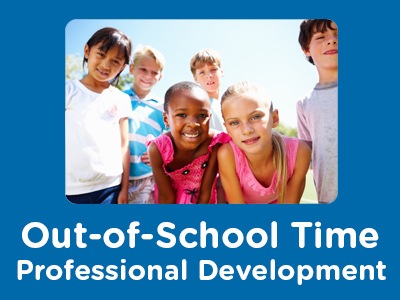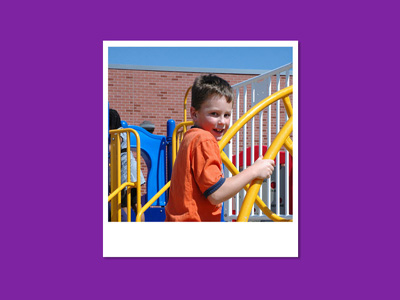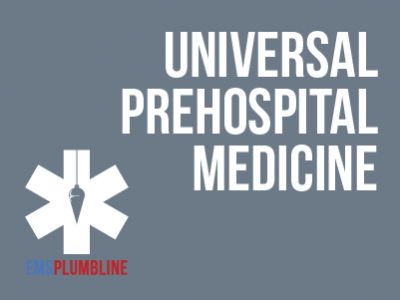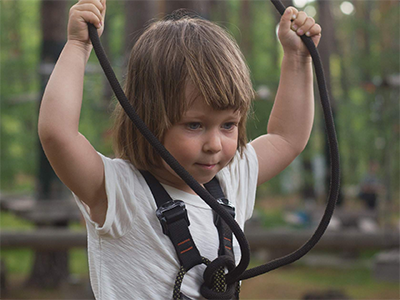 |
E-Mail Etiquette: Composing Online Correspondence |
1.50 |
It’s important for e-mail messages to be written well because they can determine your company’s success or failure. A poorly written e-mail message could give co-workers and management a bad impression of your own work habits. An effectively written e-mail message, however, is easy to understand, encourages action, and gives others a good impression of your overall job performance. |
 |
Zoological Record Keeping |
2.00 |
Keeping accurate animal-care records is an important part of zookeeping and a requirement for AZA accreditation and permitting. Standardized information systems that can be transferred and maintained collaboratively between organizations can help you identify health issues, develop sustainable species populations, and address conservation challenges. Using a case study from a zoonotic disease concern at the San Diego Zoo, you will learn the basics of record keeping, including standard abbreviations, animal identification systems, best practices in reporting, and a list of record types every accredited facility should maintain. |
 |
Creating and Maintaining Healthy and Safe School Environments |
1.00 |
Keeping school-age children healthy and safe is a major priority for schools. This requires careful attention to setting up the environment to promote healthy habits and using effective strategies for monitoring and maintaining a hygienic environment. It also requires setting up the classroom environment to promote safety and using effective strategies for monitoring and maintaining a safe environment. Because students are growing towards independence, it is also essential to help them develop habits and behaviors for living a healthy lifestyle and to help keep them safe from harm as they participate in school experiences. |
 |
Creating and Maintaining Healthy School-Age Environments |
2.00 |
Keeping school-age children healthy is a major priority for school-age programs. This requires giving careful attention to setting up the environment in a way that promotes healthy habits, and using effective strategies for monitoring and maintaining a hygienic environment. Because school-age children are growing towards independence, it is also important to help them develop habits and behaviors for living a healthy life-style. |
 |
Course 14: Creating and Maintaining Healthy School-Age Environments |
2.00 |
Keeping school-age children healthy is another major priority for school-age programs. This requires giving careful attention to setting up the environment in a way that promotes healthy habits and using effective strategies for monitoring and maintaining a hygienic environment. Because school-age children are growing towards independence, it is also important to help them develop habits and behaviors for living a healthy life-style.
|
 |
Creating Respect and Safety for Paraprofessionals |
1.00 |
Keeping school-age children respectful and safe is a major priority for schools. It requires setting up the classroom environment to promote safety and using effective strategies for monitoring and maintaining a safe environment. Because students are growing towards independence, it is also essential to help keep them safe from harm as they participate in school experiences. |
 |
Course 13: Creating and Maintaining Safe School-Age Environments |
2.00 |
Keeping school-age children safe during out-of-school hours is a top priority for school-age programs. This requires giving careful attention to setting up the program environment in a way that promotes safety and using effective strategies for monitoring and maintaining a safe environment. Because school-age children are growing towards independence, it is also important for staff to help them develop habits and behaviors that will keep them safe from harm as they participate in program experiences. Promoting and protecting children’s safety is one of the major responsibilities of staff in school-age programs. |
 |
Creating and Maintaining Safe School-Age Environments |
2.00 |
Keeping school-age children safe during out-of-school hours is a top priority for school-age programs. This requires giving careful attention to setting up the program environment in a way that promotes safety, and using effective strategies for monitoring and maintaining a safe environment. Because school-age children are growing towards independence, it is also important for staff to help them develop habits and behaviors that will keep them safe from harm as they participate in program experiences. Promoting and protecting children's safety is one of the major responsibilities of staff in school-age programs. |
 |
Constructing: Airway Essentials—Part 3 |
1.00 |
Knowing why you are doing what you are doing will almost always produce a better result. In this case, Dr. Christopher Galton explains why we ventilate at the rates and the volumes we do. This insightful discussion will offer ideas on how to use the ventilation tools that we encounter every day. Final Exam: This multiple choice exam is designed to test your knowledge of the material you just reviewed. You have two attempts to gain an 80% or higher on this exam. Please take your time and answer each question carefully. |
 |
Manejo de la Ira (Spanish) Anger Management |
1.00 |
La ira es un conjunto de respuestas físicas, emociones y comportamientos desencadenados por una amenaza o frustración percibida. La ira puede ser dañina o útil, dependiendo de cómo afrontes tu ira y la de los demás. Este curso explorará cómo comprender mejor su enojo y manejar sus respuestas de enojo. También examinará las causas del enojo y las formas de utilizarlo de manera constructiva.
Anger is a set of physical responses, emotions, and behaviors triggered by a perceived threat or frustration. Anger can be harmful or helpful, depending on how you cope with your anger and the anger of others. This course will explore how to understand your anger better and manage your anger responses. You'll also examine the causes of anger and ways to use it constructively.
|
 |
Coaching: Communication (Instructor Guide) |
1.00 |
Language is an important coaching tool. The use of suitable words during coaching will help you create relationships, repair employee confidence, and establish plans for employee success. As a coach, you must select words that directly influence your employees’ attitude, behavior, and performance. The use of appropriate language during your coaching sessions will help you convey your messages in a clear and encouraging manner.
In this course you will learn to: clearly express your message by using appropriate language, identify and use nonverbal methods of communication, and receive the desired information by asking effective questions.
This Instructor's Edition of this course includes notes and suggestions to assist you in presenting the material, whether in an in-person classroom setting or as an instructor-led online or distance-learning course. It also provides you with the answers to questions found in mid-lesson activities, as well as in the quiz that concludes the course. |
 |
Coaching: Communication |
1.00 |
Language is an important coaching tool. The use of suitable words during coaching will help you create relationships, repair employee confidence, and establish plans for employee success. As a coach, you must select words that directly influence your employees’ attitude, behavior, and performance. The use of appropriate language during your coaching sessions will help you convey your messages in a clear and encouraging manner.
In this course you will learn to: clearly express your message by using appropriate language, identify and use nonverbal methods of communication, and receive the desired information by asking effective questions. |
 |
Head Trauma Interviews: Lesson 1 |
1.50 |
Lauren Wittman RN, BSN, CCRN-CMC, sits down to discuss some of the fundamental components of brain and skull Anatomy and Physiology with Jonathan J. Stone, M.D. . As the discussion continues, Dr. Stone offers an in-depth look at what we can expect when secondary trauma to the brain continues to manifest. This valuable information will assist you with understanding your local protocols no matter where you are. Final Exam: This multiple-choice exam is designed to test your knowledge of the material you just reviewed. You have two attempts to gain an 75% or higher on this exam. Please take your time and answer each question carefully. |
 |
Coaching with Head and Heart |
2.00 |
Leaders and managers need strategies to support others in their own growth and development. In this course, participants will be introduced to a coaching process that supports individuals to make more conscious decisions, build off their strengths and internal resources and take new action. Participants will understand when coaching is needed, the mindset required, and the critical skills needed for effective coaching, including deep listening and inquiry. |
 |
Construction Safety & Prevention Program: Leadership Commitment to Operational Safety |
0.25 |
Leadership Commitment to Operational Safety is part of a twelve-part construction safety and prevention program. This course covers the basics for setting up an operational safety program. It will discuss who is responsible for each step, and the goals behind operational safety. |
 |
Knowing Yourself as a Leader |
2.00 |
Leadership in out-of-school time programs ranges from simple observation to active participation in program design and implementation. Leadership is an on-going process involving continuous learning, and taking time to discover their values, goals, skills, talents, and strengths will help staff to understand the type of leaders they are and the type of leaders they desire to be. In this course, participants will learn to develop a personal mission statement and identify strengths and weaknesses in skill development. |
 |
Strategies for Managing Risk |
1.00 |
Learn how to develop proven strategies for managing risk within your institution. During this course you will learn how to identify possible risks or hazards which could impact your operation. We will discuss the various levels of risk; the risk assessment process; possible outcomes and most importantly how to manage the risk in an effort to minimize exposure. We will share with you a risk management model of preparedness which allows your institution to be systematic and structured in your approach to managing risk. By implementing effective strategies for managing risks you will learn to assess the possible risks or hazards, categorize and prioritize the risk, assess the possible consequences. You will learn how to assign responsibility to effectively manage the risk process. Join us as we share success stories and techniques we learned along the way. |
 |
Creating a Supportive Classroom Community (CDA 3) |
2.00 |
Learn ways to bring out nurturing, caring behaviors in children and youth to create a classroom community where children and youth support each other. Learn how to use non-competitive games to foster acceptance of all children and youth. Identify the strengths and weaknesses for both you and the children and youth in your program, and how to put the strengths to good use creating a sense of acceptance and community. This course is designed to be part of a Child Development Associate (CDA) Credential™ curriculum. It covers CDA Subject Area 3: Supporting Children's Social and Emotional Development and may also be taken as a stand-alone learning event or as part of a broader early childhood education curriculum. |
 |
Developing Methods of Observation (CDA 7) |
2.00 |
Learning child observation skills can be a powerful tool for solving some of the most difficult problems faced by child care providers. Concerned about a child’s behavior? Want to know how to plan successful activities? Observation skills can help. Learn more about each child and his/her development using the methods of observation in this course. This course provides examples of good observation techniques and demonstrates skills necessary for useful observations. It covers CDA subject area 7: Observation and Assessment, and can also be taken as a stand-alone learning event or as part of a broader early childhood education curriculum. |
 |
Discuss Results: Testing Hypotheses |
1.00 |
Lesson seven of ten. You have graphs and statistical tests summarizing your results, but how does this help you test your hypotheses? Listen to a research team discuss whether they can reject one or more working hypotheses based on their results. Learn how the team distinguishes between causation and correlation in applying critical thinking skills to decide whether their measurements were good enough to really be a test of the hypotheses. |
 |
After School Improvement Series: Emergency Action Plans |
0.50 |
Like all other early childhood and school-age settings, after school programs need to consider how they prepare for and respond to emergency situations, from natural disasters, like storms, earthquakes, tornados, flash floods, or volcanic eruptions; fires; power outages; missing children; or acts of violence, including active shooter situations. Some emergency situations may require evacuation, while others may initiate a lock down, or shelter-in-place. The best way to prepare for emergency situations is to plan for them. We can do this by considering the kinds of emergency situations we might encounter, and then developing a series of procedures and protocols for responding to them. Your program’s Emergency Action Plan sets out your role and responsibilities should any of these emergencies occur.
|
 |
Supervising with Head and Heart |
2.00 |
Like young people, our own social-emotional and character competencies are important to reflect on if our desire is to create environments in which adults can successfully support young people in developing such skills. In this course, participants will explore social-emotional and character skills that support supervisors, as well as the personal roadblocks, power and potential pitfalls that supervisors may experience. Participants will also become familiar with a management framework to strengthen their supervision. |
 |
Assessing and Implementing a Safe Child Care Environment (CDA 1 & 5) |
2.00 |
Little explorers have big ambitions! As infants and toddlers embark on their journey of discovery, their safety becomes your top priority. This course equips you with the knowledge and tools to proactively create safe and stimulating environments. Learn to assess play spaces, evaluate activities, and refine existing practices, fostering a nurturing atmosphere where exploration and safety flourish hand-in-hand. |
 |
Trust-Based Animal Training - Elephants |
2.00 |
Managing elephants with a trust-based system in a way that helps to protect animal care staff from injury is the trend among accredited zoological organizations. This program offers the experience and expertise of San Diego Zoo Global animal behavior experts who have used this method for more than a decade to work with elephants during a variety of situations including new arrivals, reproduction, birth, and medical procedures. You will learn the basics of operant conditioning and how this is applied to elephant management with positive reinforcement techniques. Facility needs, management, and animal training are also addressed. |
 |
Budgeting: Manufacturing Budgets |
0.50 |
Manufacturing budgets outline and plan the expenses that a company undertakes to manufacture its products. Until products are sold, the cost of producing them is considered part of the company’s assets as inventory. Generally, you would not consolidate these expenses with non-manufacturing budgets in the master budget. |


























